Question
Who among the following sits second to the left of
E? Study the following information carefully and answer the questions below: There are nine persons i.e. E, F, G, H, I, J, K, L and M are sitting in a triangular table such that three of them are sitting at the corner of the table and they are facing outside the table and two persons are sitting on each side of the table and they are facing inside the table. K and G are immediate neighbours of each other on the same side of the table. H sits third to the left of K. J sits two places away from H. E sits to the immediate right of J. Only one person sits between G and F who is not an immediate neighbour of K. L sits fourth to the right of I who is not an immediate neighbour of H.Solution
K and G are immediate neighbours of each other on the same side of the table. As per this statement, there are two possible cases and the arrangement will look like this: Case-1 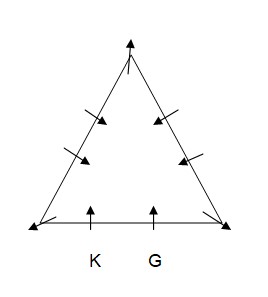 Case-2
Case-2 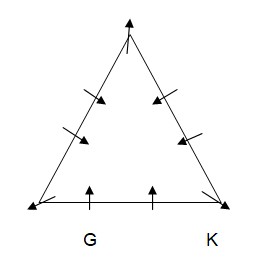 H sits third to the left of K. As per this statement, the arrangement will look like this: Case-1
H sits third to the left of K. As per this statement, the arrangement will look like this: Case-1 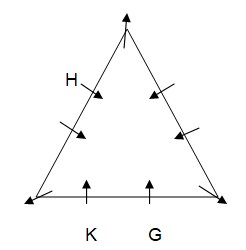 Case-2
Case-2 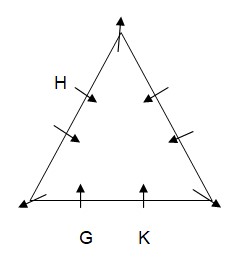 J sits two places away from H. As per this statement, CASE I will further get spilt into one more case and the arrangement will look like this: Case-1
J sits two places away from H. As per this statement, CASE I will further get spilt into one more case and the arrangement will look like this: Case-1 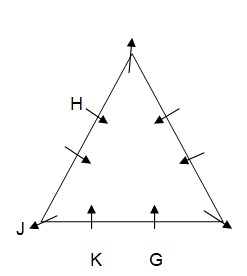 Case-1A
Case-1A 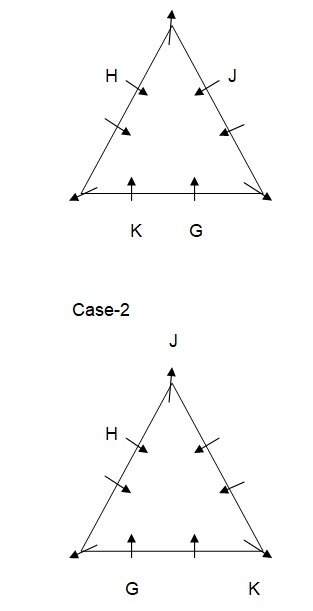 E sits to the immediate right of J. As per this statement, the arrangement will look like this:
E sits to the immediate right of J. As per this statement, the arrangement will look like this: 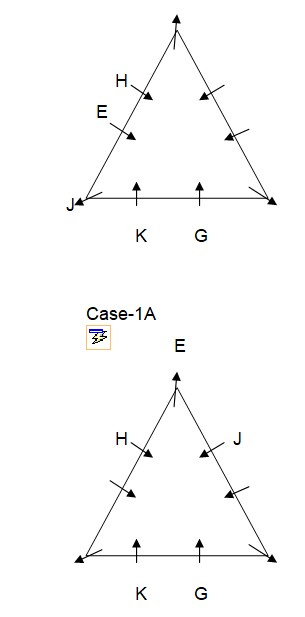 Case-2
Case-2 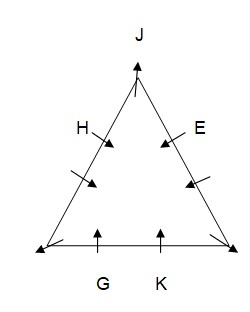 Only one person sits between G and F who is not an immediate neighbour of K. As per this statement, CASE II will get eliminated and we will continue with CASE I and CASE I (A) and the arrangement will look like this: Case-1
Only one person sits between G and F who is not an immediate neighbour of K. As per this statement, CASE II will get eliminated and we will continue with CASE I and CASE I (A) and the arrangement will look like this: Case-1 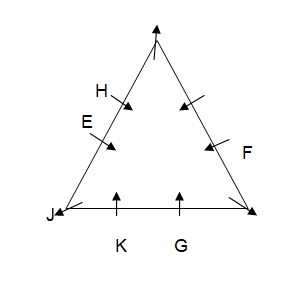 Case-1A
Case-1A 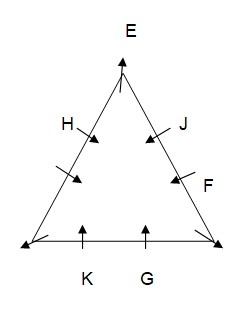 L sits fourth to the right of I who is not an immediate neighbor of H. As per this statement, CASE I will get eliminated and we will continue with CASE I (A) and the final arrangement will look like this: Case-1A
L sits fourth to the right of I who is not an immediate neighbor of H. As per this statement, CASE I will get eliminated and we will continue with CASE I (A) and the final arrangement will look like this: Case-1A 
- If the product of two numbers is 144 and their HCF is 6, then find the LCM of the given two numbers.
HCF of two numbers is 12 and their LCM is 924. If one number is 132, find the other.
- The LCM of two numbers is 240, and they are in the ratio 3:5. Determine the sum of these numbers.
The HCF of 450 and 740 is 150, their LCM is:
The HCF and LCM of the two numbers are 225 and 360 respectively. When the first number is divided by 3, the quotient is 20. The other number is.
- The sum and difference of L.C.M and H.C.F of two numbers is 216 and 184. If one of the numbers is 25, then find the other number.
If the product of two numbers is 108 and their HCF is 6, then find the LCM of the given two numbers.
The LCM of x and y is 2057 and their HCF is 23. If x = 187, what will be the value of y?
The LCM of the two numbers is 27 times their HCF, and the difference between the LCM and HCF is 416. If the numbers are in the ratio 4: 7, then find the...
Rohit spends an average of Rs. 500 on Sundays and Rs. 350 on the remaining days. Find his average spending in a 30-day month starting with Sunday.
Relevant for Exams:


